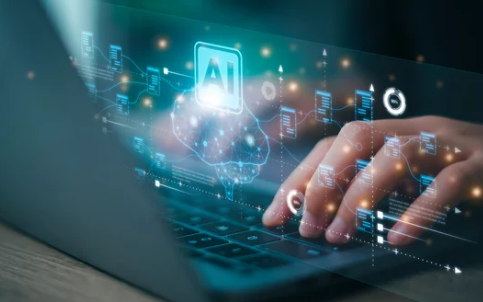With all the buzz around Artificial Intelligence (AI), Machine Learning (ML), and Deep Learning (DL), it’s easy to get confused. These terms are often used interchangeably, but they actually refer to different layers of the same concept.
If you’ve ever asked yourself, “What’s the difference between AI, machine learning, and deep learning?”—this guide is for you. We’ll break each one down in simple terms, show how they connect, and share real-world examples that make it all clear.
Let’s Start with the Big Picture: What Is AI?
Artificial Intelligence (AI) is the broadest term. It refers to the ability of machines to perform tasks that normally require human intelligence—like reasoning, learning, problem-solving, and decision-making.
In Simple Terms:
AI is any technique that allows computers to mimic human behavior.
✅ Common Applications of AI:
- Voice assistants like Siri or Alexa
- Spam filters in your email
- Smart thermostats that learn your habits
- Chatbots for customer support
- Self-driving cars making real-time decisions
AI can be rule-based (using “if-this-then-that” logic) or learning-based (where it improves through data).
Zooming In: What Is Machine Learning (ML)?
Machine Learning is a subset of AI. It allows machines to learn from data and improve at tasks without being explicitly programmed for each step.
Instead of hardcoding rules, you feed a machine lots of data, and it learns patterns on its own.
In Simple Terms:
ML is when AI learns from data like humans learn from experience.
✅ Examples of Machine Learning:
- Netflix recommending shows based on your watch history
- Credit card fraud detection using transaction patterns
- Email systems learning to recognize spam
- Language translation tools (like Google Translate)
Types of Machine Learning:
| Type | Description | Example |
|---|---|---|
| Supervised Learning | Learns from labeled data | Predicting house prices based on features |
| Unsupervised Learning | Finds patterns in unlabeled data | Grouping customers by shopping behavior |
| Reinforcement Learning | Learns by trial and error | Teaching a robot to walk or play chess |
Going Deeper: What Is Deep Learning (DL)?
Deep Learning is a subset of machine learning that uses neural networks with multiple layers to analyze data in complex ways. These models can learn high-level features and patterns, often outperforming traditional algorithms in tasks like image and voice recognition.
In Simple Terms:
Deep learning is machine learning on steroids—using neural networks that simulate how the human brain works.
✅ Examples of Deep Learning:
- Facial recognition on smartphones
- ChatGPT generating human-like responses
- Medical imaging systems detecting diseases
- Self-driving cars identifying traffic signs and pedestrians
- Language models translating, summarizing, or writing content
Deep learning thrives on big data and powerful hardware. The more data it gets, the better it performs.
Visualizing the Relationship
Here’s an easy way to understand how these terms are connected:
Artificial Intelligence
│
├── Machine Learning (subset of AI)
│ └── Deep Learning (subset of ML)
Think of it like this:
- AI is the umbrella concept.
- ML is a toolset inside AI.
- DL is a specialized technique within ML.
Side-by-Side Comparison: AI vs ML vs DL
| Feature | Artificial Intelligence | Machine Learning | Deep Learning |
|---|---|---|---|
| Definition | Machines mimicking human intelligence | Systems learning from data | Algorithms using layered neural networks |
| Key Goal | Enable smart behavior | Learn patterns from data | Learn complex patterns automatically |
| Human Input | May use rules or learning | Needs labeled or unlabeled data | Needs massive data and compute power |
| Examples | Chatbots, voice assistants | Spam filters, product recommendations | Facial recognition, autonomous driving |
| Data Requirements | Varies | Moderate | High (big data) |
| Hardware Needs | Low to moderate | Moderate | High (GPUs/TPUs) |
Real-World Analogy: Learning to Drive
Here’s a simple analogy to bring it all together:
- AI is like a human learning to drive a car using logic, memory, and decision-making.
- Machine Learning is like learning to drive by watching others, practicing, and improving with feedback.
- Deep Learning is like an expert driver who has driven millions of miles, mastering complex routes by instinct through years of experience.
Which One Should You Focus On?
If you’re new to the AI space:
- Start with AI concepts to understand the broader ecosystem.
- Dive into machine learning to explore how computers learn from data.
- Once you’re comfortable, explore deep learning to work with image recognition, voice processing, and natural language generation (like ChatGPT).
Each level builds on the previous, and learning them in order helps you avoid confusion.
Conclusion: Know the Difference, Unlock the Potential
Understanding the difference between AI, machine learning, and deep learning isn’t just for techies. It’s essential for business owners, marketers, students, and creatives who want to take advantage of today’s digital tools.
- AI is the big picture—making machines smart.
- ML is how they get smarter—by learning from data.
- DL is the cutting edge—tackling the most complex tasks with deep neural networks.
By knowing how they work together (and how they differ), you’ll be better equipped to use AI in your work, career, or business.
Want a personalized AI roadmap based on your industry or goals? Just ask—I’ll help you get started with the right tools and tutorials!
Also Read :
